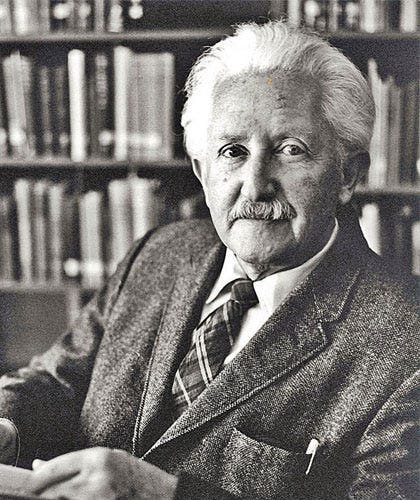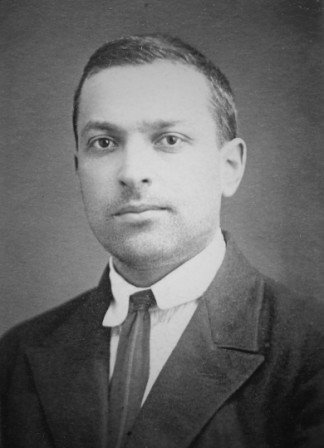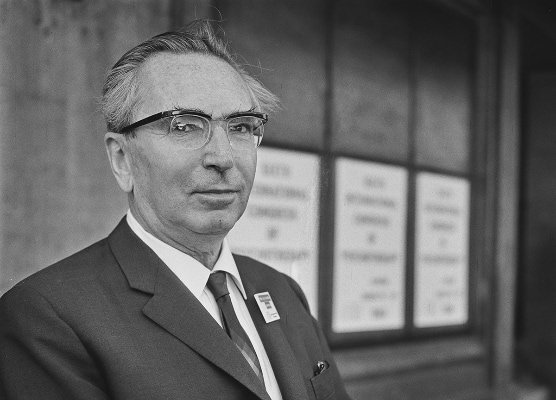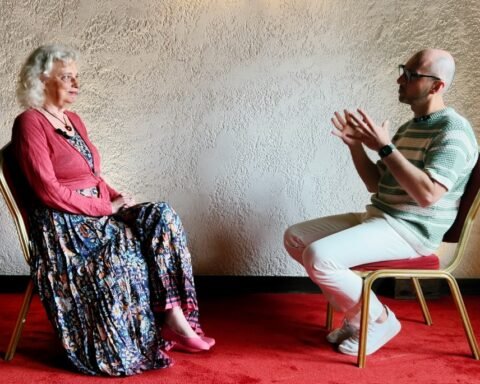“In the midway of this our mortal life, I found me in a gloomy wood, astray, Gone from the path direct.”
— Dante Alighieri
Introduction
It is commonly observed that individuals in middle age often encounter a challenging period known as a mid-life crisis. This internal conflict involves emotional adjustment and rethinking of values, while each person experiences such situation in a unique way. However, despite its widespread recognition, the mid-life crisis remains debatable and scientifically understudied.
A psychoanalyst Elliott Jaques who coined the term in his essay “Death and the Mid-Life Crisis” in 1965, linking it with transformation and creative rebirth. Yet, it’s actually Carl Jung (1933) who was the first to mention the occurrence of a mid-life crisis, noting his own struggles during middle age. He concluded that this period represents a normal phase of psychological development and growth. Moreover, as a key reasons for this suffering, Jung identified a lack of purpose and meaning in life.
Erik Erikson (1950) also considered the mid-life crisis a regular developmental stage, identifying eight stages in a person’s life journey where identity crises occur. Levinson (1978), a colleague of the former, defined the crisis as a transition that necessarily appears “at the stage of transition into middle adulthood,” around the ages of 30-40 and often includes feelings of meaninglessness, turmoil, confusion, dissatisfaction, and disappointment with work and family life, as well as fear of aging and death.

The traditional interpretation is prevalent that a mid-life crisis is a special period of doubt and anxiety, when one feels uncomfortable with the realisation that life is half over. However ample evidence demonstrates that the significance of this crisis has been exaggerated and that its experience somehow is exceptional at all.
While this is the case, existential-phenomenological approach sees human development as a lifelong process, where mid-life is an acute term when an individual begins to review their accomplishments or failures. This is a time of grappling with ontological questions, especially the mortality, what potentially can bring significant changes in a way of living. This perspective assumes that individual acquires the skills of living through ongoing self-reflection and adaptation (Adams, 2006).
In this essay, I will outline different frameworks on the concept of a mid-life crisis, exploring theoretical foundations and practical insights from the case of my client, Daniel.
Theoretical Foundations and Diverse Perspectives
To illustrate the theoretical ground of the mid-life crisis I consider to use Erik Erikson’s theory of psychosocial development that provides a structured framework for understanding different stages of a human life. The period of the middle adulthood, which ranges between the ages of 40 and 65, present generativity/stagnation conflict.
Generativity encompasses the desire to create and nurture things that will outlast oneself, such as raising children or contributing to society, on contrary a stagnation is represented by self-absorption and a deficit of purpose. When this type of conflict is successfully resolved, individual experiences feelings of productivity, creativity, and care, but a failure will lead to a stagnation along with a sense of unproductiveness. Erikson (1950) believed this allowed for genuine communing with the inner self, which might have helped in handling the phase’s common process of emotional oscillations and value reorientation.
Complementary to this if this concept had been explored through the lens of Levinson’s (1978) ideas on the ‘Midlife Transition’, it may have allowed to comprehend deeper individual’s discomfort and internal anxiety associated with this period. Levinson viewed this transition between the ages of 40 and 45, as a developmental task that begins a new step in individuation, potentially leading to increased compassion, reflection, and genuine self-love. Besides, a significant change in personal and also professional domains might occur, since individuals strive to realign their lives with their evolving sense of self (Levinson, 1978).
Even earlier, Lev Vygotsky provided insight into some of life’s transitions through his concept of ‘age crises’. He defined these crises as periods of holistic change in a person’s personality that occur systematically as stable periods change (Vygotsky, 1984). These critical periods, or crises, cause qualitative positive changes that move the personality to a new stage of development, but are often accompanied by increased conflict, irritability, and even developmental abnormalities.
However, Vygotsky’s concept of “age crisis” as a holistic change during stable periods calls into question the reliability of identifying a specific “midlife crisis”. For example, applying this concept in practice can make it difficult to understand an individual’s unique experience of midlife crisis. This variability in the experience of midlife crisis highlights the ambiguity inherent in each person’s individual journey.

Based on the findings of Aldwin and Levenson (2001) it can be argued the concept of a mid-life crisis has faced substantial criticism. According to the research, people in mid-life often report fewer psychological symptoms, better marital satisfaction, better perception about life, and a greater sense of mastery than younger individuals. What is also quite remarkable is that people in their forties do not have the largest percentage of divorce, suicide, depression, or emotional instability (Aldwin & Levenson, 2001).
Whitbourne (2010) similarly challenges the notion of a mid-life crisis as a distinct phase. In her survey with 500 adults, she could not find the reference to “midlife valley” in overall satisfaction which indicates that the search for and the presence of meaning in life, in fact, rises with age.
Equally important is the MIDUS national survey (Brim et al., 2004), which revealed that only about a quarter of respondents experienced a mid-life crisis. Notably, they attributed these crises not to aging but to major life events that posed significant threats or challenges. Specifically, 26% of Americans reported having had a midlife crisis, yet most did not link these crises to the process of aging.
Another essential point are the cultural factors that add up to shaping the experiences of a mid-life. At large the concept of a mid-life crisis is rooted in Western cultural narratives, in which an individual achievement and personal fulfilment is being promoted. In contrast, cultures with collectivist values may not exhibit the same patterns of existential questioning during mid-life, as communal and familial responsibilities take precedence.
Therefore, the proposition of the mid-life crisis as “one of the most intriguing puzzles of life-span developmental psychology is the myth of a midlife crisis.” (Heckhausen, 2001, p. 345) considerably underlines the discursive dynamics on this theme.
But to further broaden the general view on the matter at hand the existential-phenomenological perspective serves as another substantial lens to view the mid-life crisis.
Existential-Phenomenological Insights
According to the existential-phenomenological point of view, the mid-life crisis is more than a period of doubt and anxiety; it represents a deep re-evaluation of one’s life path and identity.
Adams (2006) underscores how “transformational moments” are embedded in our culture through rituals marking the end of one life stage and the beginning of another – birthdays, graduations, marriage, parenthood, and midlife itself.
Drawing on Jaques’ (1965) ideas, these milestones serve as reminders of life’s transience and encourage individuals to confront the realities of aging and mortality. For many at mid-life, this recognition of life’s finitude can prompt reconsideration of values and purpose as the lifespan begins to feel less abstract and more present.
As novelist Vladimir Nabokov (1989) poignantly put it, human life is “a brief crack of light between two eternities of darkness” (p. 19). While in youth, life’s end can feel remote, even hypothetical, middle age brings a sharpened sense of mortality, as the years behind us start to overshadow those ahead, shifting perception of life from a distant horizon to a vivid, immediate reality.
Contemplating on this perspective, I get closer to a profound paradox of Simone de Beauvoir (1992) the feeling of being ‘swindled’ by life though knowing that one wouldn’t live their life any differently. This view sums up the mid-life crisis in a nutshell in terms of consequences of past decisions and resulting disappointment and the struggle to find meaning being aware of life’s finitude.
Viktor Frankl (1967) challenged the view that life’s end-goal is the re-establishment of inner equilibrium. Instead, he posited that humans are oriented towards discovering potential meanings and values in the world. This existential vacuum, consisting of sense of boredom and emptiness, becomes especially prominent at mid-life, pleading individuals to find a renewed sense of purpose. He emphasised the ‘will to meaning,’ suggesting that true meaning is to be discovered in the world, not within oneself.

Irvin Yalom (1980) also highlights the intrinsic search for meaning as fundamental to our existence. He argues that existential anxieties about isolation, freedom, and death are intertwined with our quest for meaning. Death anxiety, in particular, becomes more pronounced during mid-life, as individuals become acutely aware of their mortality and the desire to leave a meaningful legacy.
As explained by Spinelli (1994), the existential-phenomenological approach sees the concept of ‘self’ as constructed through personal and social experiences, whether in mid-life or at any other stage. Strong, often irrational beliefs form the building blocks of this self, and any incongruence between the believed and experienced self presents a choice: to embrace the experience or to alienate it. Frequently, individuals avoid reflection to maintain the status quo, leading to the replacement of one set of disowned self-constructs with another, equally disowned. This pattern is evident in mid-life crises, where instead of exploring and accepting the changes this life phase brings, individuals replace their current self-construct with another that does not align with their experience. In order to overcome mid-life crisis a construction of a new ‘self’ might be insufficient. What is needed is a genuine encounter, exploration, and ownership of the experiences that mid-life brings, while considering the implications these changes have on one’s relationships and social world. With regard to this perspective an intriguing question comes up: to what extent is the mid-life crisis a socio-cultural construct, internalised by individuals as a normative expectation of their culture or society?

To sum up, human development, from an existential-phenomenological stance, is defined by discontinuity, accident, and commitment to choices made. For that reason, mid-life is seen as a period marked by thorough re-evaluation and the potential for significant life changes and could be a particularly beneficial in exploring the ‘moments’ or ‘episodes’ where individuals become acutely aware of their choices and the possibility of revision (Adams, 2006). It is a time one confronts their mortality and the authenticity of their existence, potentially leading to transformative experiences across various life dimensions.
Practical Reflections and Implications
Daniel, who I’ve been seeing in my clinical placement, depicts a mid-life crisis as presented in various theories. He is 39 years of age, has been married for 15 years, is a father of two girls, and works as a financial analyst.
His job, once fulfilling, now leaves him feeling idle and unmotivated what refers to one of the aspects of the stage of Generativity and Stagnation in Erikson’s model pointing on a struggle with finding purpose in his professional journey.
This is different from existential phenomenological approach where emphasis is on exploration of client’s lived experiences and the meaning he ascribes to his situation. Daniel’s sense of stagnation viewed as “existential stuckness”. He feels trapped in a life that no longer resonates with his evolving self. Through the course of therapy Daniel’s feelings of alienation and disconnection are addressed, eventually uncovering his underlying existential anxieties.
His relational world, is a monotony. The passionate flames that once fuelled his marriage have dwindled to cold embers. Relationships with his wife became rather platonic with a rare physical intimacy and emotional detachment. Daniel misses deep and meaningful connections. Levinson’s mid-life transition theory (Levinson, 1978) comes alive here reminding that individuals reassess their life and relationships during this period.
In fact, perhaps, the core of the mid-life crisis apparent in Daniel’s case can be associated with ontological issues. Recent losses that he has experienced prompted his awareness of mortality. His uncertainty about the future and concerns of not fully living, highlights the existential struggles that often emerge during mid-life. Frankl’s (1967) premise that people are fundamentally meaning-seeking beings is particularly relevant in presented case.
Thus, linking all Daniel’s experiences and situations to different theories, it can be only concluded that the matter of mid-life crises is quite intricate. And yet, it is possible to assert that by applying existential phenomenological approach in tandem with the outlined theories, we can explore the client’s lived experiences from multiple viewpoints. A broader perspective helps to disentangle the specifics of a mid-life crisis and to simplify ways on how to cope and pass this period of confusion.
Conclusion
Despite the relatively heated debate on the existence of this phase, mid-life crises remain a significant turning point for many people that symbolises the halfway point in their life. This brings about conflict and deep ontological questions, therefore representing more of an “existential crisis”.
Developmental theories provide structured frameworks to understand mid-life transitions, though they are met with criticisms suggesting the mid-life crisis might be a myth. Nevertheless, the existential approach spotlights a deep introspection and changes within a person which can occur during this period of time.
It has been shown that, while the concept of a mid-life crisis is clearly debatable, it certainly stands for an important period of self-examination and reconsideration. By combining developmental theories with an existential approach, we can more effectively steer through and comprehend the intricacies of mid-life stage, eventually facilitating discovery of meanings, development, resilience and well-being of a person.
Adapted from an essay written during studies and submitted to the New School Of Psychotherapy And Counselling (NSPC) and Middlesex University, London, in July, 2024.
References
Adams, Martin. (2006). Towards an Existential Phenomenological Model of Life Span Human Development. Existential Analysis. 17. 261-280.
Aldwin, C. M., & Levenson, M. R. (2001). Stress, coping, and health at midlife: A developmental perspective. In M. E. Lachman (Ed.), Handbook of midlife development (pp. 188–214). New York: Wiley.
Beauvoir, S. de. (1992b). Hard Times: Force of Circumstance, Vol. II: the autobiography of Simone de Beauvoir. Paragon House.
Brim, O. G., Ryff, C. D., & Kessler, R. C. (Eds.). (2004). How healthy are we?: A national study of well-being at midlife. The University of Chicago Press.
Erik H. Erikson, Childhood and Society (New York: Norton, 1950).
Frankl, V. (1967). Psychotherapy and Existentialism. New York: Simon and Schuster.
Heckhausen, J. (2001). Adaptation and resilience in midlife. In M. E. Lachman (Ed.), Handbook of midlife development (pp. 345–391). John Wiley & Sons, Inc..
Jaques, E. (1965). Death and the mid-life crisis. International Journal of Psychoanalysis, 46:502-5.
Jung, C. G. (1933). Modern man in search of a soul. Harcourt, Brace.
Levinson, D. J. (1978). Seasons of a Man’s Life. New York: Random House.
Nabokov, V. V. (1989). Speak, memory: an autobiography revisited. Rev. ed. New York, N.Y., Vintage International.
Spinelli, E. (1994). Demystifying Therapy. London: Constable and Company Ltd.
Vygotsky L.S. Collected Works in 6 vol. 4: Child Psychology. М., 1984
Whitbourne, S.K. (2010). The search for fulfillment. New York: Ballantine Books.
Wood, C., Littleton, K. and Oates, J. (2002). Lifespan development. In Cooper, T. & Roth, I. (eds.) Challenging Psychological Issues. Milton Keynes: The Open University.
Yalom, I. D. (1980). Existential Psychotherapy. New York, NY: Basic Books.










[…] After World War II, this idea evolved. Instead of focusing on scientific speech, philosophers like Wittgenstein, Austin, and Ryle turned their attention to everyday conversation. They believed many so-called […]
Respect to website author, some great entropy.